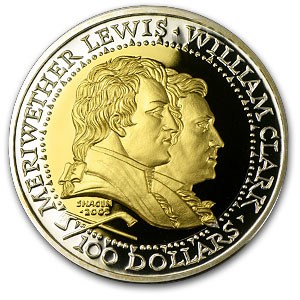Market Commentary: They call it “convergence” in advertising. The CNN-AOL-Time Warner machine blitzkrieged us with unrelenting, shameless, in-your-face, blatant, HYPE; contriving and conspiring to fashion something as inconsequential as the opening of a kid’s movie – Harry Potter and the Sorcerer’s Stone (Philosophers’ Stone in UK) – into not just “A” news item – “THE” news item. The ONLY news item for the few days before the movie’s opening in the USA and Canada. Nothing subtle about it. Everything else took a back seat. Magazines, television, radio, newspapers, and the internet were mobilized in the full frontal attack. The actors, producers, directors, and anyone else even remotely related to the film, were trotted out on the talk show huckster circuit. The movie made US$93.5 million in box office receipts the first weekend – the largest take on record. Randolph Hearst was raked over the coals for Anti-trust when he tried to monopolize the media…..truly we now live in different times. Anyone out there who says that the new phase of stock market hype is not concocted, contrived and carried out, in absolutely identical coordinated fashion is in serious denial. Barron’s said last week, “Yikes! Irrational exuberance is back!”
For those who think I am a bit of a curmudgeon, I’m taking my niece (8) and nephew (6) to the film Tuesday. I’ll let you know what they think.
Every few years we owe it to ourselves to read Nineteen Eighty Four, by George Orwell. That time is due once again. I highly recommend it as a metaphor for today. Lay-offs continue, projections for Xmas sales are just awful, yet all the time the U.S. government says things are “double-plus good”.
It’s okay. As America moves down market, we’ll all shop at Walmart instead of Niemann Marcus.
Like many gold bugs I am disappointed with the metal’s performance over the last month. There’s not much that I can add to the debate that hasn’t already been said. Most of the people who are jumping into the stock market again subscribe to the “greater fool” theory and think they are clever enough to jump back out without getting burned, maybe with recouped tech losses. Crises are bound to come in this manic marketplace, and the system perhaps has never been as fragile as it is now. A prudent course would be to stay in touch with events as they unfold. Things could move very fast. For alternative sources of news to the mainstream I suggest looking at http://www.drudgereport.com
Turn the spin on its head, and stay the course with precious metal investments.
Silver, Part 1:
For the next two weeks I want to talk about silver. The silver price hit an 8 year low during this last week. So why talk about it? Check out http://www.silver-investor.com or read any of the many Ted Butler commentaries. Silver is attractive as an investment for the same reasons gold is, but for additional reasons as well. Bullion silver investing is kind of like looking at gold penny stocks versus the big gold producers. If both silver and gold bullion prices move, you stand to get a much greater bang for your buck in percentage terms with silver.
Silver is consumed in industry, most notably photography, and so the asinine claims that are made for gold – that every ounce that has ever been mined still exists somewhere ready to be sold (I saw this idiotic nonsense trotted out yet again (!) in Maclean’s magazine, November 12th issue) – can’t be made for silver. This is an important tidbit of misinformation that therefore can’t be fed to Joe and Sally Sixpack. Though a generation in America has now grown up without silver coinage, practically everyone knows that a Silver Dollar used to be made out of silver. Lots of people have silver U.S. pre-1964 coins squirrelled away in sock drawers. My point being that silver as an investment, however small, is much more familiar to the rank and file than gold. In a society where half of American households have invested in the stock market, buying tech stocks on blind faith and at the behest of their brokers, the media, and Al Greenspan, those same Americans remain potentially fertile ground as investors in something as tangible and immediately comprehensible as silver.
An important factor in silver fundamentals is that U.S. government stockpiles are now officially depleted. This means that there is no massive overhang out there that could potentially be sold off by an administration hostile to silver. The history of the stockpile goes back a long way. In fact, back to the days of the Comstock Lode in Nevada. The stockpile was the end result of America’s experiment with the bimetallic monetary system, which lasted for just shy of a century.
It’s important to understand the history of the bimetallic system because numerous commentators have claimed that silver is presently undervalued in relation to gold, in comparison with history. At a gold price of $273 US/oz using the 16:1 ratio, silver should be $17.06 US per ounce. I was curious about this myself and decided to do some research. The results are below. I remain bullish on silver, for reasons I will outline next week. But for this week:
Bimetallic system in the USA:
This brief historical synopsis may seem a bit arcane, but it is important for understanding the historical relationship, or should I say “tussle”, in the USA between gold and silver. It’s also instructive to see what extremes were resorted to by government in order to manipulate gold and silver currency.
For most of world history, gold and silver coinages, even if coined by the same government, operated much like parallel currencies. There was no set ratio or established convertibility between the two metals. While gold remained the currency of monarchs and the aristocracy, silver was the currency of commerce and trade. Virtually no gold ever freely circulated. Against such a backdrop, the fledgling U.S. government constructed its currency laws. There were two important factors featured in the U.S. Coinage Act of 1792, whereby the U.S. Mint was established, that would have great future implications. Firstly, the adoption of a bimetallic standard. The United States dollar was defined both in terms of gold and silver. A dollar was defined as 371.25 grains silver or 24.75 grains gold (mint ratio of 15 to 1).
Thus the gold price was fixed at $17.68 per ounce and silver at $1.18 per ounce. The ratio of 15 to 1 can be traced back as far as Portugal in 1688. Many countries adopted bimetallic systems because of increasingly large supplies of silver coming from new mines. To coin silver as money was thus inflationary, because in real terms, silver was becoming less scarce compared with gold, due to ever increasing supply. This situation had been especially lucrative for the Spanish crown, which controlled practically all the silver mines of the New World and so could freely coin money. Think of silver as the “paper” of today – the supplies seemed limitless and the price was constantly falling compared with gold. Coining money and paying debt with silver seemed to be a great idea, and a great way for governments to inflate the money supply without having to ante up with more gold. The trick was to restrict the availability of gold money and thus the convertibility of silver back into gold.
The undoing of bimetallism was the eventual outcome of a second provision in the Act: “The Assayer shall receive and give receipts for all metals which may lawfully be brought to the mint to be coined; shall assay all such of them as may require it, and shall deliver them to the Chief Coiner to be coined. The Chief Coiner shall cause to be coined all metals which shall be received by him for that purpose, according to such regulations as shall be prescribed by this or any future law.” America in 1792 had an agrarian economy. Why did George Washington adopt bimetallism? Perhaps it was seen as “egalitarian”. Perhaps America simply wanted to fall into line with Europe, or perhaps the government flirted with the idea of confiscation of private gold holdings to bolster the treasury? With virtually no precious metals production in the original Thirteen Colonies, presumably the government was hoping that somehow it could get it hands on gold and pay out lesser value silver. At least the promise of convertibility was there.
Actually, any citizen turning in gold would be paid in paper, since the government in the gold sense was broke. The Bank of the United States by congressional charter issued notes from 1791 to 1836. Experience with Continental Congress fiat notes however made people reluctant to accept paper instead of metal and as a result foreign coins had a much wider circulation. In fact, Spanish silver 8 reales coins became known as Spanish American dollars and were officially adopted as currency in 1797. It was not until 1857 that the federal government felt able to repeal all former acts authorizing the use of foreign gold or silver coins. Virtually no gold was ever turned in to the mint, and early American gold coins had extremely small mintings. By 1820, the silver supply was increasing so much and so rapidly, particularly from new mines in Mexico, that it was putting inflationary pressures on the dollar. This led to the very first devaluation of the U.S. dollar, in 1834, whereby it was redefined as 23.2 grains of gold (mint ratio between gold price and silver price now 16 to 1). The gold price was increased to $18.86 per ounce – in effect the gold dollar shrunk in size.
This turned things around, because under the artificial construct of the 16:1 ratio, the amount of silver metal in a dollar coin actually could be purchased on the open market for less than a gold dollar. The finessing of the ratio was enough to tip the balance in the government’s favour. Governments rarely change the rules unless it’s a good deal for them.
Everything shifted with the discovery of gold at Sutter’s Mill, California in 1848. So much gold came out of the California gold rush that the value of silver, particularly in the west, actually increased in terms of gold. Under Gresham’s Law bad money chases out good, and silver, because it was worth more, vanished from circulation into private hoards. The mint issued fractional gold coins – even 25 cent pieces of gold! Bimetallism in effect vanished and gold coins went into common circulation. However, fractional gold coins didn’t catch on because of their very small size. Congress in 1853 reduced the weight of the silver halfdollars, quarters, and dimes by 7 percent to decrease the famine in fractional currency. Because the new subsidiary coins were again worth more as money than as bullion, it was possible to keep them in circulation. Under the Free Coinage Act, the mint was still obligated to purchase all the gold bullion delivered to it, but no matter, the gold coffers were now topped up. American gold could be used to pay for goods overseas. The money supply of course was inflated by the new gold supply, which aided massive expansion of American industry. When the S.S. Central America paddlesteamer went down with a shipment of gold coins from the San Francisco mint in 1857, it triggered a bank panic, since in effect the money supply was tightened without warning.
With the 1859 discovery of the Comstock Lode in Nevada, things were destined to change again. Once production got going, bonanza silver from this district threw everything out of whack. The mint was obliged to purchase the silver production from the mines (a mint was established in Carson City) even though the bullion market price of silver declined. The mint continued to coin silver dollars but didn’t put them into circulation, knowing that they would be exchanged for gold dollars and hoarded.
During the Civil War, the Federal government suspended payment in specie (redemption of paper money with gold or silver coins) in 1861, and gold and silver coins were driven out of circulation. The mines of the west continued to churn out silver from the Comstock and from new gold camps such as Bannack in Montana. Precious metals production paid for the war and Federal control of this production insured defeat for the Confederacy.
After the war, precious metals production was ratcheted up even more. The Mining Act of 1872 ensured that new finds in the American west could be secured by eastern capitalists for exploitation. American silver production far exceeded gold production, even by a 16:1 ratio. All the while the government purchased silver. Lobbying from rich mine owners ensured the status quo of bimetallism, as it had been before the war. Meanwhile, huge amounts of silver were being produced from Rammelsberg in Germany, Europe’s largest mine, and the Great Laxey Mine in the United Kingdom, Europe’s second largest mine. Silver production worldwide had grown to 80 million troy oz annually by the 1870s. European governments began abandoning bimetallism because convertibility was robbing their treasuries of gold. After the conclusion of the Franco-Prussian war in 1871, victorious Prussia demanded reparations from France in gold. Prussia paid her foreign debts in silver and then abruptly went off the bimetallic standard, putting an end to convertibility.
Matters in the U.S. came to a head in 1873, after a second bank panic. The coinage law was revised and the silver dollar was omitted from the list of coins authorized to be minted. In an extraordinary move, the Coinage Act abolished the legal tender status of ALL silver dollars struck from 1794 to 1873 (they were reinstated 5 years later). This is the law savagely denounced by the vocal partisans of free and unlimited coinage of silver as the “Crime of `73.” It was claimed that it was enacted “without debate, and without the knowledge of the American people” (times don’t change). Payments for private purchases of goods were limited to $5 payment in silver. It was a de facto break with bimetallism. The government couldn’t afford to purchase all the silver coming from American mines, and instead of repealing the Free Coinage Act, did a dodge around it.
For 5 years no silver dollars were minted, a short time perhaps, but an eternity for an elected government. Fresh demands by silver mine owners for a return to unlimited silver coinage led to the passage (1878) of a compromise measure, the Bland-Allison Act, over President Hayes’s veto. The Act continued bimetallism at a ratio of 16 to 1 with gold, but…. “the Secretary of the Treasury is authorized and directed to purchase, from time to time, silver bullions at the market price thereof, not less than two million dollars worth per month, nor more than four million dollars worth per month, and cause the same to be coined monthly, as fast as so purchased into such dollars”. This was of course another dodge around having to purchase all silver production, and in fact no more than the mandated minimum was ever purchased. Plans were however made to put more silver dollars into circulation. Up until then the seated Liberty dollar had been treated like the recent ill-fated Susan B. Anthony dollar. Seated Liberty was replaced by the much more aesthetic Morgan dollar. Large numbers of dollar coins though never in fact saw wide circulation, because the international silver price continued to plummet. The Treasury was required by law to mint the dollars, but not to circulate them. Fear that more valuable gold dollars would be extracted from the Treasury once again kept most of the silver in the vaults. The government also began issuing silver certificates against reserve silver, in lieu of coins. The certificates could be used to pay taxes, but they weren’t money and couldn’t be exchanged for gold.
The U.S. mint was the major consumer of domestic silver. Although the coinage of silver dollars was resumed in 1878, the metallic gold dollar remained the monetary standard of value in the U.S. Bimetallism had been legally gutted and the gold standard to all purposes adopted.
By 1890, production from the Comstock Lode had all but ceased, however the Coeur d’Alene silver camp in Idaho and the Leadville camp in Colorado had taken up the slack. Successful lobbying once again (this time from Spokane) resulted in the Sherman Silver Purchase Act, which almost doubled purchases of bullion for coinage by the U.S. government. The Act had an immediate effect on the price of silver, which artificially – and temporarily – rose from 84 cents to $1.50 an ounce. The introduction into the stream of currency of enormous quantities of overvalued silver caused a drastic decline in the gold reserve of the Treasury. A glut of worldwide silver meant that a silver dollar – in terms of contained metal – was worth far less than a gold dollar. Due to convertibility of silver currency to gold, the feared vanishing of gold into private hoards finally occurred. The inflation of the money supply touched off yet another panic, in 1893. After an emergency congressional session, President Grover Cleveland repealed the Sherman Act. Its repeal had severe impact on the silver price, which dropped from 83 cents to 62 cents an ounce in one 4 day period.
Silver was the main issue in the 1896 presidential campaign, when William Jennings Bryan called for free coinage of silver at a ratio of 16 to 1, claiming that the inflationary effect of flooding the market with silver (“free silver”) would benefit the common man’s ability to pay his debts. The silver forces were however defeated, and in 1900 the Gold Standard Act affirmed the gold dollar as the standard unit of value. The gold:silver ratio was a big domestic issue a hundred years ago – like Healthcare Reform or Monica Lewinsky today. I’ve read that the children’s book “The Wonderful Wizard of Oz” written in 1900 (with the Great and Imperial Oz, and the Yellow Brick Road) is an allegory for the gold standard controversy. But I’ve also read that author L. Frank Baum chose the name “OZ” from a label “O to Z” on the filing cabinet that faced his writing desk. I like the allegorical story best.
Silver dollars have never widely circulated in America. Huge numbers of dollars sat in the vaults of the various regional mints. After official abandonment of bimetallism, silver dollars became proxy tokens for gold dollars, and unnecessary and undesirable claims on the gold reserve. Massive amounts of silver coins were melted down by the Treasury into bullion bars where they formed the basis of the U.S. Defense National Stockpile strategic reserve. This reserve was drawn down during WWI, but ballooned again during WWII. Presumably it was inflated by European payments for arms. In November, 2000, the following press release was made:
The U.S. Defense National Stockpile Center (DNSC) committed to deliver its remaining stockpile of silver, nearly 15 million ounces, to the United States Mint for its coinage programs. The final balance of silver will be shipped to the U.S. Mint over the next few weeks, effectively depleting the U.S. silver stockpile.
and, in the laws:
The Secretary shall obtain silver for coins minted under this paragraph by purchase from stockpiles established under the Strategic and Critical Materials Stock Piling Act (50 U.S.C. 98 et seq.). At such time as the silver stockpile is depleted, the Secretary shall obtain silver for such coins by purchase of silver mined from natural deposits in the United States or in a territory or possession of the United States not more than 1 year following the month in which the ore from which it is derived was mined. The Secretary shall pay not more than the average world price for such silver. The Secretary may issue such regulations as may be necessary to carry out this subparagraph.
So it would seem that silver bullion, for production of silver Eagles, numismatic coins and commemoratives by the U.S. Mint will in future be sourced from domestic production – a potential windfall for a U.S. silver miner. My guess is it might be Coeur d’Alene Mines.
Conclusions:
The history of bimetallism in the U.S. illustrates that fixing the gold price in terms of anything else, be it paper, tobacco, cowrie shells, or even another precious metal, is fraught with peril. The 16:1 ratio is an obsolete and artificial construct that worked when mine supply roughly approximated the ratio but became unbalanced when silver production began to run far ahead of the ratio. The 16:1 ratio survived 56 years, which was an incredible run, but it had a rough ride for most of the time. Its longevity was due to intense lobbying by the silver industry. In some new states like Nevada, Idaho and Colorado, silver was the mainstay of the economy, or in fact the whole economy.
There is no basis to ever believe that 16:1 will be adopted again, or that silver is “undervalued” in relation to gold because of its historical relationship. Dividing the gold price by a factor of 16 and declaring the answer the “correct” price for silver is a fallacy. There is however no doubt that when gold will experience substantial price gains it will carry silver along with it. Various factors suggest that gains on a percentage basis could even outstrip the performance of gold.
Next week:
Silver Part 2. Fundamental changes in silver mining: geographical and deposit types. Shifts in production: from primary product to co-product to by-product to ? no product? Bullish fundamentals for silver. The Chinese wildcard.
*****
Straight Talk on Mining is provided for information purposes only. Nothing herein is to be construed as a recommendation to buy or to sell any particular security or financial instrument. Nothing herein is to be construed as a recommendation to engage in any particular investment strategy or trading strategy.
The investments discussed herein may be unsuitable for investors depending on their specific investment objectives, financial situation, and risk tolerance. Private investors should obtain the advice of a qualified financial advisor before entering into any transaction.
Straight Talk on Mining is based on information that is generally available to the public. The sources used are believed to be reliable, but because the information and data that they provide are beyond our control, no representation is made that it is complete or accurate. Staff of Straight Talk on Mining may or may not be invested in the equities mentioned.
References to other publications and direct links to external Internet sites are sometimes given. The inclusion of any publication, organization or Internet site herein does not imply any endorsement. Straight Talk on Mining has no control over the content of any Internet site that you may reach through links that are provided, nor can their truth, accuracy, or completeness be vouched for.
Straight Talk on Mining is not a financial services company nor is it affiliated with any financial service company in any jurisdiction.
The author/publisher, Dr. Keith M. Barron, is not a qualified financial advisor and is not acting as such in this publication. The accuracy of any legal term or definitions used herein should be verified with your legal advisor or the appropriate government agency.
 Straight Talk On Mining Insights on mining from economic geologist Dr. Keith Barron.
Straight Talk On Mining Insights on mining from economic geologist Dr. Keith Barron.




